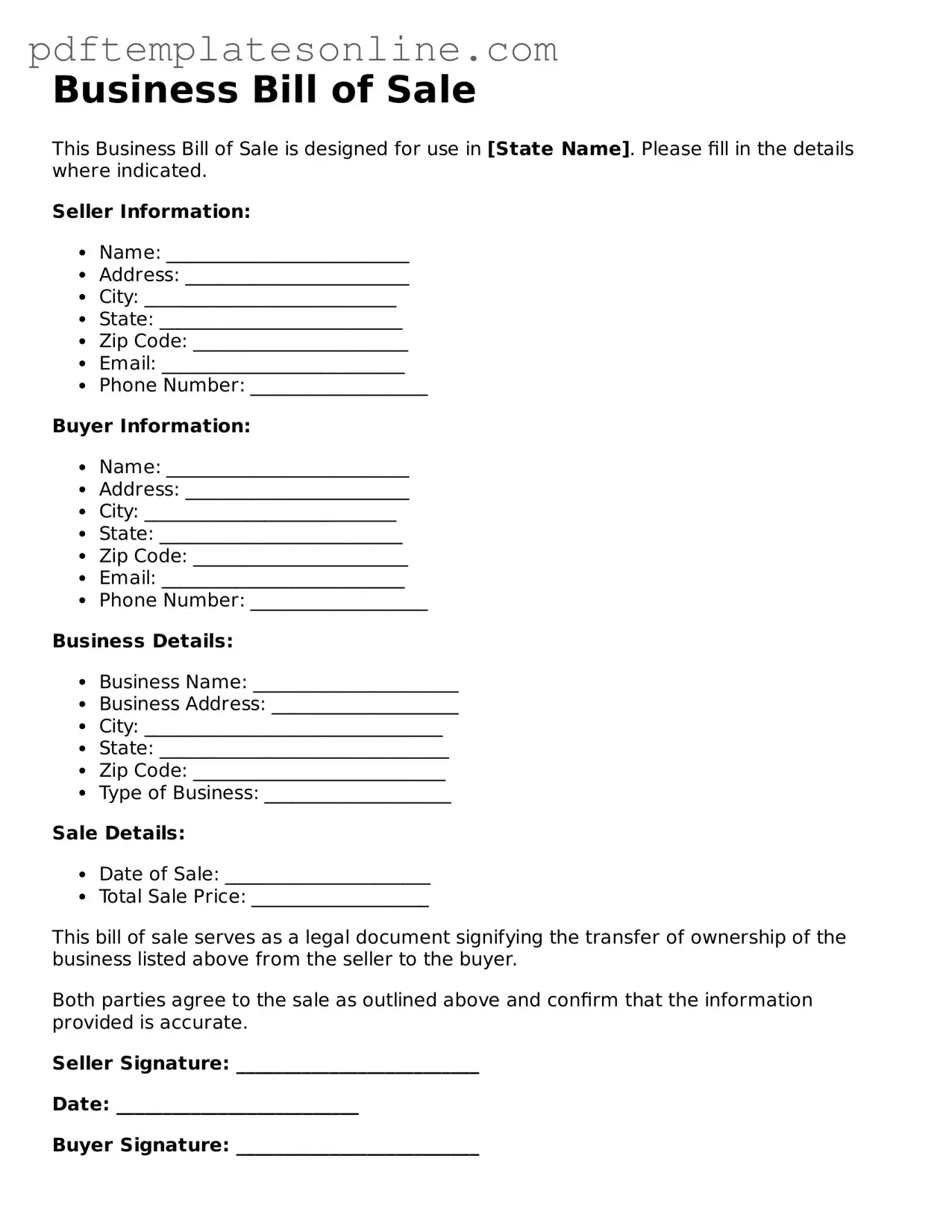Filling out a Business Bill of Sale form can seem straightforward, but many people make critical mistakes that can lead to complications down the line. One common error is failing to include the correct date of the transaction. Without a clear date, it can be difficult to establish when the ownership transfer occurred, which may create legal issues later.
Another frequent mistake is not providing complete information about the buyer and seller. This includes names, addresses, and contact information. Incomplete details can result in disputes over ownership or difficulties in reaching either party if issues arise after the sale.
People often overlook the need to describe the business being sold thoroughly. A vague description may lead to misunderstandings about what is included in the sale. It's crucial to list all assets, inventory, and any liabilities clearly to avoid confusion.
Many individuals forget to include the purchase price. This is a critical detail that must be documented. Without it, the transaction may be questioned, and tax implications could arise. Always ensure that the price is clearly stated and agreed upon by both parties.
Another mistake is neglecting to sign the document. Both the buyer and seller must provide their signatures for the Bill of Sale to be valid. Failing to do so can render the document unenforceable, leaving both parties vulnerable.
Some people fail to have witnesses or notarization when required. Depending on the state, certain transactions may need to be witnessed or notarized to be legally binding. Check local laws to ensure compliance.
Additionally, individuals sometimes make the mistake of not keeping copies of the completed Bill of Sale. Both parties should retain a copy for their records. This documentation can be vital if disputes arise in the future.
Another common oversight is not checking for typos or errors in the document. Simple mistakes can lead to significant misunderstandings. Take the time to review the form carefully before finalizing it.
People may also forget to include any contingencies or conditions of the sale. If there are specific terms that need to be met before the transaction is complete, these should be clearly outlined in the Bill of Sale.
Finally, failing to consult with a legal professional can be a significant mistake. While it may seem unnecessary, getting legal advice can help ensure that the Bill of Sale meets all legal requirements and protects both parties involved.
